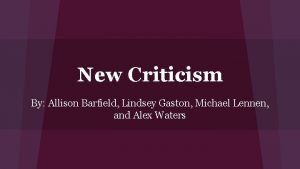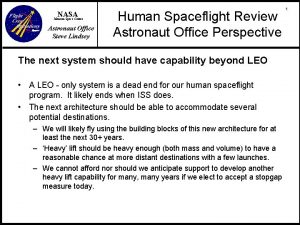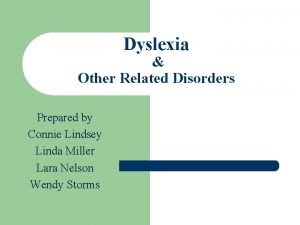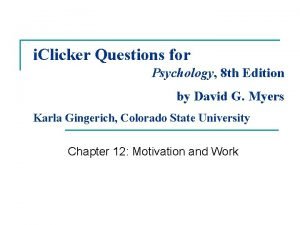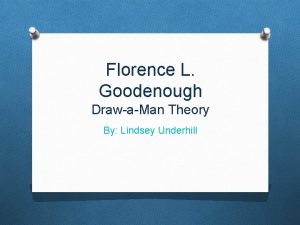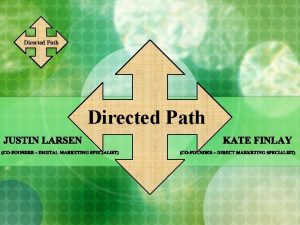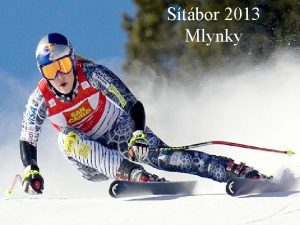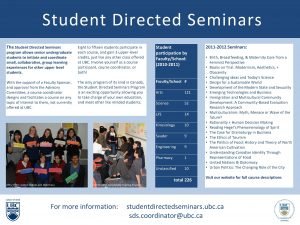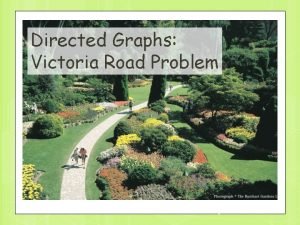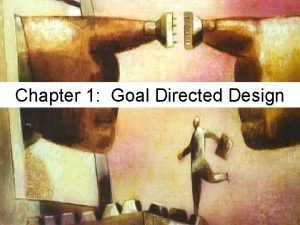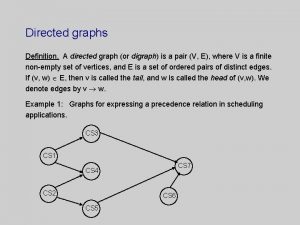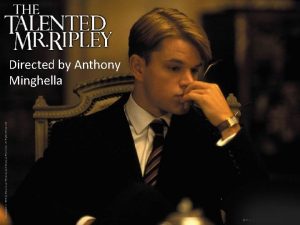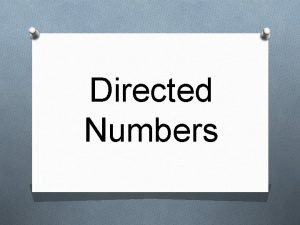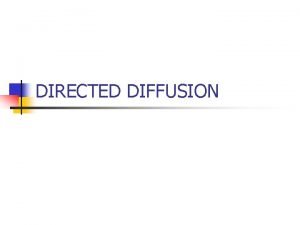Learning Theories Lindsey Thomas Directed Instruction Learning Theories














- Slides: 14

Learning Theories Lindsey Thomas

Directed Instruction Learning Theories Behaviorist theories Information-Processing theories Cognitive-Behaviorist theories Systems Approaches to Instructional Design

Behaviorist Theories (B. F. Skinner) – Operant Conditioning Theory: theorized that people can have control over their actions – Believed learning is “observable responses that change in frequency or duration as a result of consequences, (which are) events that occur following behaviors” – Believed consequences influenced future behaviors – 3 situations that affect behavior: 1. Positive reinforcement 2. Negative reinforcement 3. Punishment

Information-Processing Theories (Atkinson and Shiffrin) – Hypothesized the human brain allows the person to learn and remember – Believed that brain works as a computer for the human body Sensory Registers Short-Term Memory Long-Term Memory – 3 types of memory: 1. Sensory Registers – part of memory that receives information a person senses 2. Short-Term Memory (STM) – part of memory where new information is held temporarily. 3. Long-Term Memory (LTM) – part of memory that can hold an unlimited amount of information indefinitely

Cognitive Behaviorist Theory (Robert Gagne) – – Translated the principles from both behaviorist theories and information-processing theories into instructional strategies to be used by educators. – 9 events of instruction: 1. Gaining attention 2. Informing the learner of the objective Instruction by educators had to provide “conditions for learning” with the use of each type of skill. 3. Stimulating recall of pre-requisite learning 4. Presenting new material Students had to demonstrate they had learned the prerequisite skills. 5. Providing learning guidance 6. Eliciting performance Computer methods such as drills and tutorials were useful for demonstration of skills. 7. Providing feedback about correctness 8. Assessing performance 9. Enhancing retention and recall

System Approaches to Instructional Design – Robert Gagne and Leslie Briggs worked together to construct the instructional design. – Based on behaviorist, information-processing, and cognitive-behaviorist theories. – Transfers “laboratory-based learning principles” previously used in the military and industrial training into useful methods in traditional curriculum and instruction

Constructivist Learning Theories Social activism theory Social cognitive theory Scaffolding theory Child development theory Discovery learning Multiple intelligences theory

Social Activism Theory (John Dewey) – Promotes interdisciplinary curriculum and hands-on experience in the classroom. – Students should be interested in what they are learning. – Curriculum topics should be combined instead of taught separately. – Education is means for a student to grow. – Students should be able to connect with what they are learning. – Students should learn by the use of hands-on methods.

Social Cognitive Theory (Albert Bandura) – Students learn by observation rather than by their actions. – Teachers use modeling in the classroom. – Students learn from the actions of others. – Self-modeling videos allow the students to look at their performances. – Students who do not believe in their academic abilities have difficulty learning.

Scaffolding Theories (Lev Semenovich Vygotsky) – Children build on what they know to further their education with the help of adults. – Culture affects student learning. – Zone of Proximal Development: difference between the levels of cognitive development of adults and children – Teachers should assign work that is within each student’s zone of proximal development.

Child Development Theory (Jean Piaget) – All students go through 4 stages of cognitive development: 1. Sensorimotor stage 2. Preopertional stage 3. Concrete operational stage 4. Formal operations stage – Assimilation: fitting new experiences into an already existing view of the world – Accommodation: changing an existing view of the world to better fit new experiences

Discovery Learning (Jerome Bruner) – Unstructured learning activities such as problem-solving environments, simulations, and searching the internet for information – “an approach to instruction in which students construct their own knowledge about a topic through firsthand interaction with an aspect of their environment” – 3 stages of children development: – Teachers suggest pre-requisite knowledge is needed. 1. Enactive stage – birth to age 3 2. Iconic stage – age 3 to age 8 3. Symbolic stage – age 8

Multiple Intelligences Theory (Howard Gardner) – States that there at least 8 different types of intelligence 1. Linguistic 2. Musical 3. Logical-mathematical 4. Spatial 5. Bodily-kinesthetic 6. Intrapersonal 7. Interpersonal 8. Neutralist – Suggests that teachers identify each student’s type of intelligence and base instruction upon those intelligences – Group work allows each student to participate and use their specific intelligence

References Roblyer, M. D. (2016). Integrating educational technology into teaching (7 th ed. ). Boston: Pearson. page 34 -47
 Syntax directed definition and syntax directed translation
Syntax directed definition and syntax directed translation Differentiated instruction vs individualized instruction
Differentiated instruction vs individualized instruction Direct vs indirect instruction
Direct vs indirect instruction Lindsey wyma
Lindsey wyma Icd-10 code for prerenal azotemia
Icd-10 code for prerenal azotemia Lindsey wilby
Lindsey wilby New criticism definition
New criticism definition Steve lindsey astronaut
Steve lindsey astronaut Lindsey norgrove
Lindsey norgrove Lindsey dolohanty
Lindsey dolohanty Lindsey albenberg
Lindsey albenberg Connie lindsey
Connie lindsey Dr lindsey patterson
Dr lindsey patterson Lindsey is extremely afraid of becoming obese
Lindsey is extremely afraid of becoming obese Lindsey underhill
Lindsey underhill






